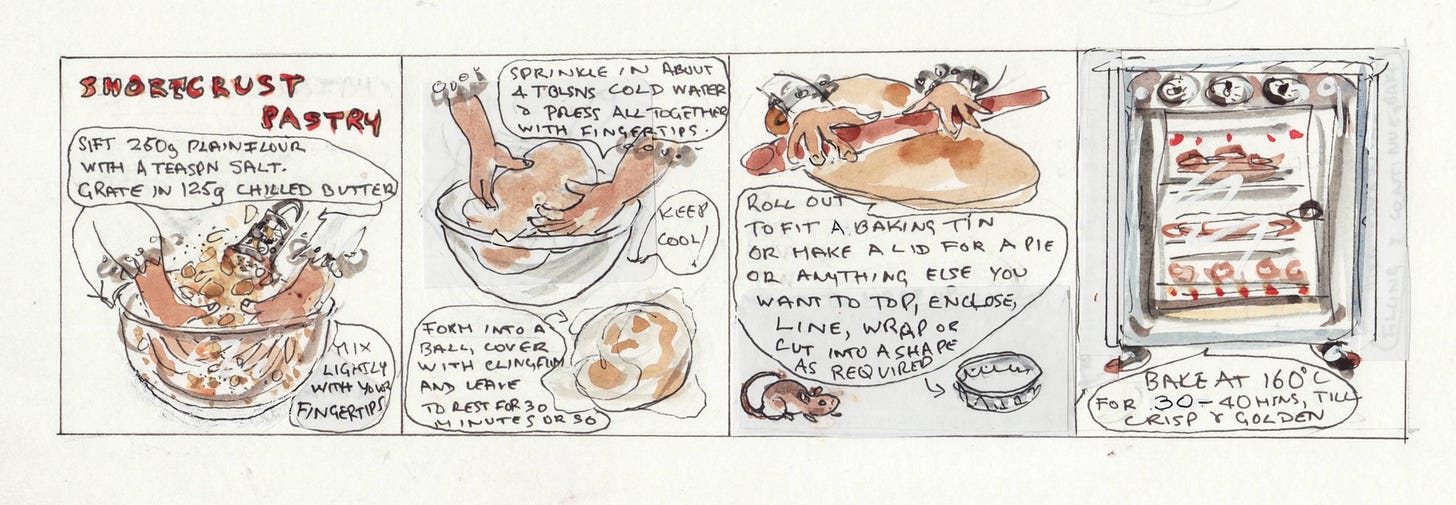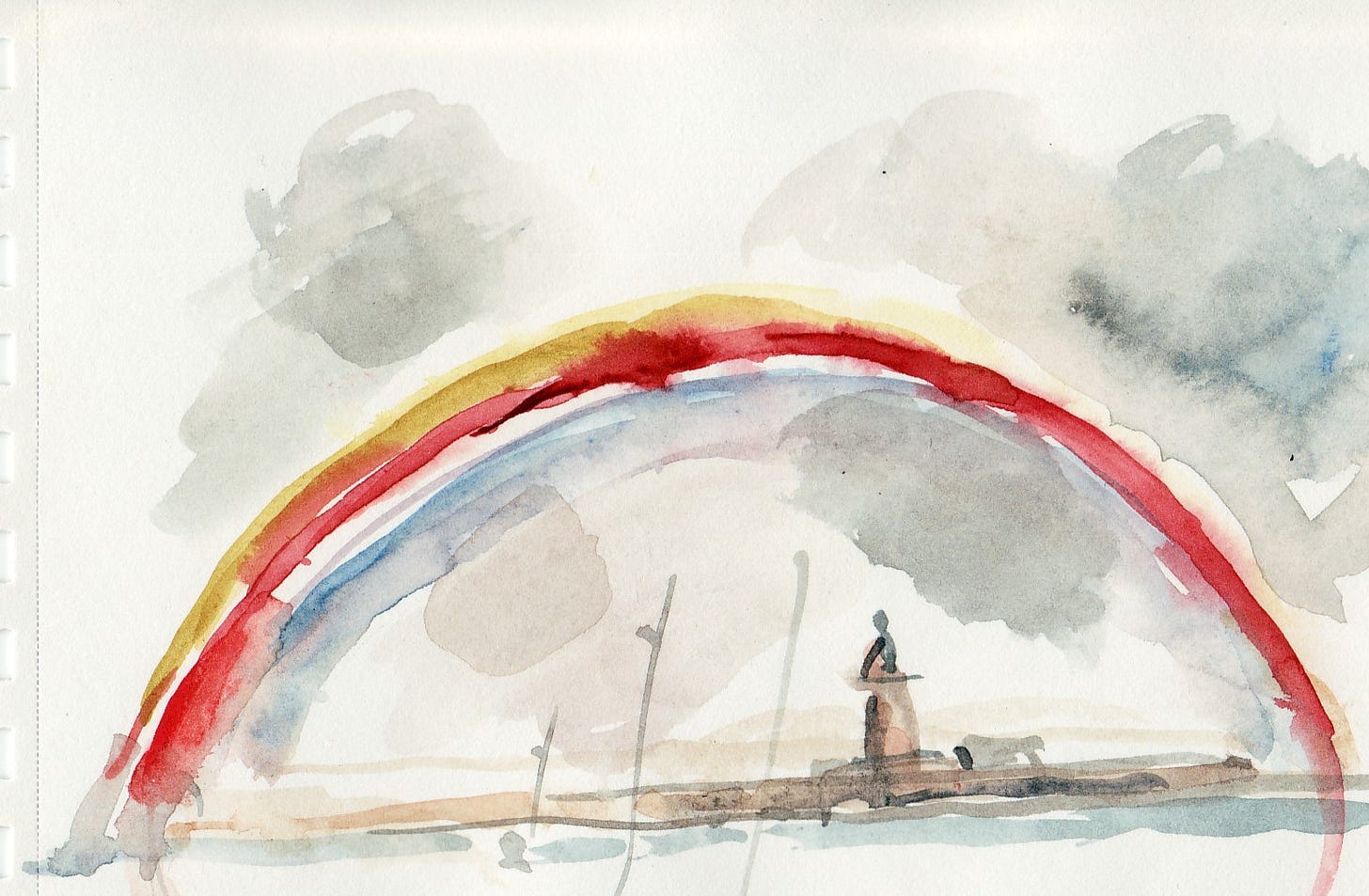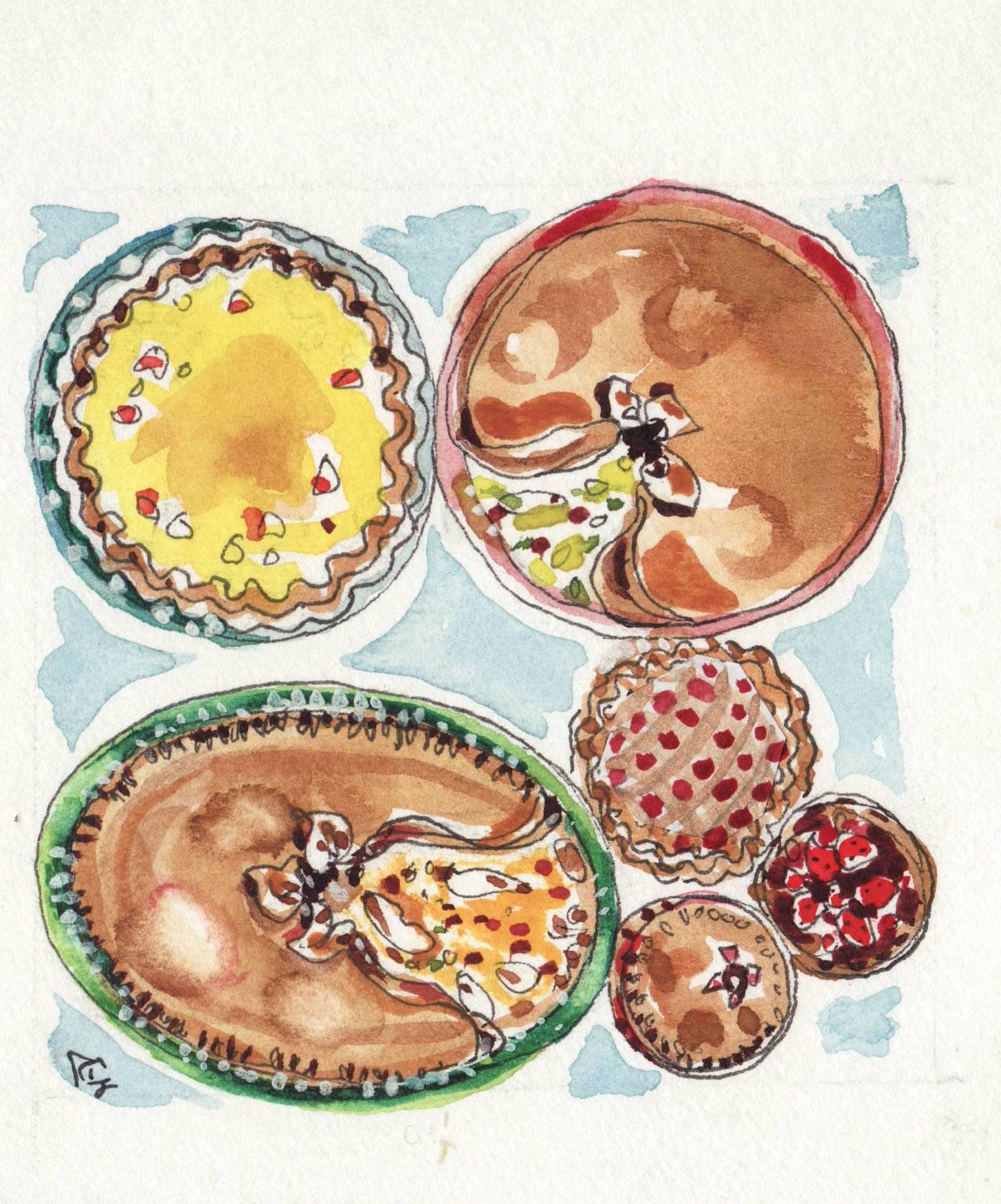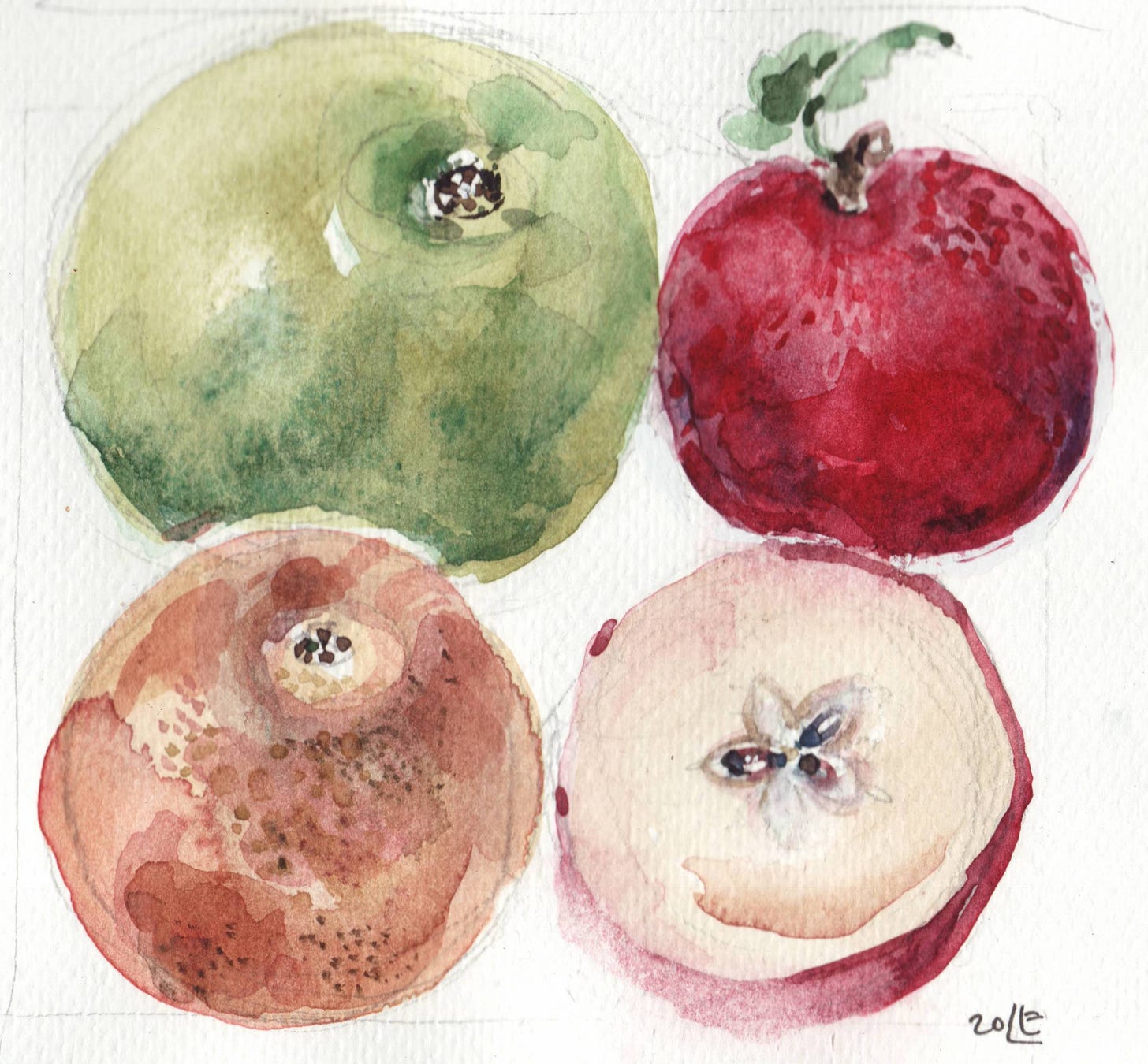A newly-minted political rapprochement between Monsieur Macron and the breakaway islands just across La Manche (renaming large stretches of off-shore water being currently the thing on the other side of the pond), offers the chance that, whatever else is up for grabs elsewhere in the world, l'entente cordiale is alive and still kicking.
Which is the perfect moment for solving, since it seems clear that not much else can be solved, the knotty problem of what makes the difference between a pie and a tart. At first sight, the pie is English, while a tart is French. Not so fast. Received wisdom has it (at least in England, I can’t speak for Wales, Scotland or Northern Ireland) that an open-top pie is actually tart (quiche lorraine is an egg-and-bacon tart with rather more butter and cream).
The pie, it’s generally agreed,is a pastry-covered tart that may be savoury or sweet, single or double-crust, and baked in an oven-proof container that's either a pie-dish (deep) or a tart-tin (shallow). A hand-raised pie (pork, veal-and-ham, possibly chicken or game) is a filling enclosed in a pre-formed pastry container (coffin) that hold's its shape in the oven with or without support. Please feel to disagree.
The English and (particularly) the Scots, acquired a fair number of our food-related words from Norman French. That said, Scotland and England diverge most noticeably in food-labelling (a Scottish leg of lamb is a gigot), and my sauce-stained copy of the late, much missed Catherine Brown's Scottish Cookery (1985) offers a recipe for leek tart that's "a thick layer of buttered leeks encased between two layers of light flaky pastry [that makes] a good slice to go with ham and pickles". Which seems to indicate a degree of seriousness - proper food as in English pork-pie rather than a frivolous Frenchified tart.
Further distinction can be made in that French pastry (brisée, feuilletté, choux) is traditionlly made with butter, whereas English pastries (shortcrust, flaky, hot-water) for both sweet and savoury pies is/was/should be made with all lard, a clear pure white dripping prepared by melting down the fat of the household pig. On festive occasions, short-crust and rough-puff lard can be cut fifty-fifty with butter. So, in the spirit of hands-across-seas, what follows is the French way with an almost-English double-crust pie that could actually, given a chance, be a tart.
Croustade de pommes aux noix
Double-crust apple tart with walnuts
You’ll find home-made croustades on sale in the markets of Perigord, and possibly elsewhere, in the winter months. A top-and-bottom crust is unusual in France where a tart is usually an open-top cartwheel rather than this crisp rumple-topped pie prepared with an all-egg fresh pasta dough rolled paper-thin and spread with softened butter. The technique requires skill and patience since the dough-sheets are stretched out on the fists rather than rolled with a rolling-pin, much as for the filo pastries of the Ottoman Empire, blueprint for Austria's apple strudel, a refinement Germany's apple dumpling. Pulled-dough requires two people working together over a large kitchen table with clean flour-dusted tablecloth. Once prepared, the sheets, as with baklava, are separated with a brushing of melted butter.
Serves 6-8
The pastry
350g strong plain flour
1/2 teaspoon salt
2 large eggs, lightly forked to blend
200g butter, softened and beaten to lighten
The filling
1k yellow-fleshed apples (reinettes or les golden – Golden Delicious)
About 4 tablespoons Armagnac or apple-brandy
100g shelled walnuts, roughly chopped
200g caster sugar
To finish
Goosefat or extra butter for brushing, melted
First make the pastry. Sieve the flour and salt into a bowl. Make a well in the middle and crack in the eggs. Pull the flour into the eggs with your hands, working gradually from the edges, adding water as you go, until you have a soft, smooth dough – you’ll need about 150ml - exactly as if you were making home-made pasta. Form the dough into a ball, cover with cling film and set it aside to rest for half a hour - long enough to soften the gluten in the flour and make the dough more elastic.
Meanwhile, peel, core and slice the apples. Sprinkle with apple-brandy or Armagnac - enough to perfume rather than drown - and leave for an hour or two to absorb the liquor.
Roll or pat out the dough to the thickness of a wedding ring. Spread the surface with the softened butter, leaving a finger's width of edge unbuttered. Fold the dough over itself in three and roll it out again - you will need to flour it well. Leave it to rest again for 10 minutes. Repeat the operation 3 times. Finally, cut the dough into 2 pieces and roll each out as thin as possible - paper-thin shows real skill. Leave to dry for an hour.
Preheat the oven to 350F/180C/Gas4 .
Brush both sheets of pastry with the melted fat or butter. Reserve one sheet, and use as much as you need of the other to line a 25ml diameter tart tin with plenty of overlap. Cut the other half into 3-4 sheets, lay these gently on top of the lining pastry to form layers, leave the edges untrimmed and flopping.
Spread the lining with the ready-soaked apple-slices (reserve any juice) and the walnuts, dusting with sugar as you go.
Top with the reserved pastry-sheet laid on in layers as for the base, leaving the edges floppy and loose. Fold the loose flaps over the top and crumple them like an unmade bed – you may need to snip them about a little. Cut a little hole in the top for the steam to escape.
Bake in the preheated oven for 30-40 minutes until the pastry is crisp and well-browned – check after 20 minutes and turn the oven down if necessary.
Sprinkle with a little more sugar and the reserved juice shaken from your fingers onto the hot pastry as soon as the pie comes out of the oven.
p.s. …check out my website for my fruit and veg prints (plus fungi and fish) - order at https://elisabethluard.org










